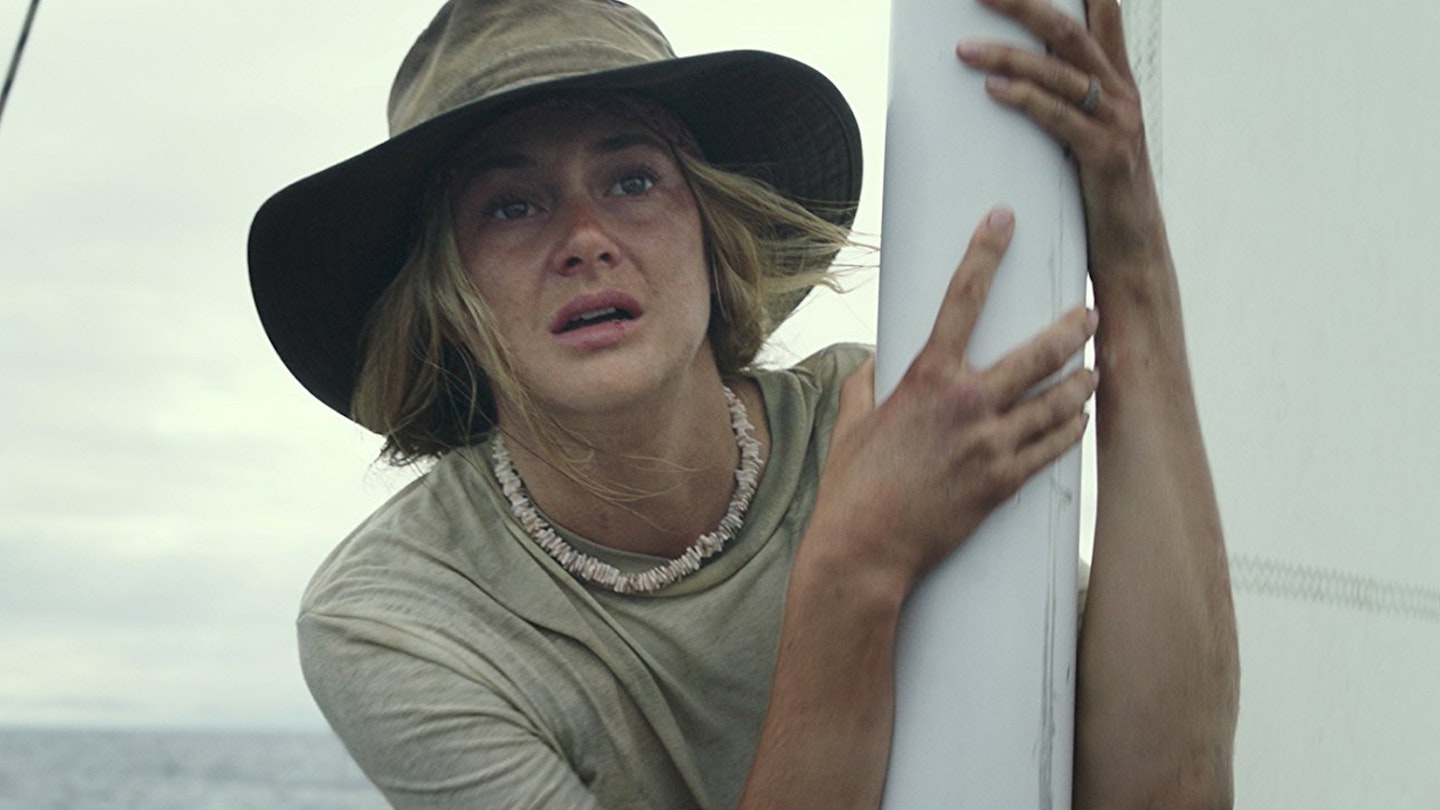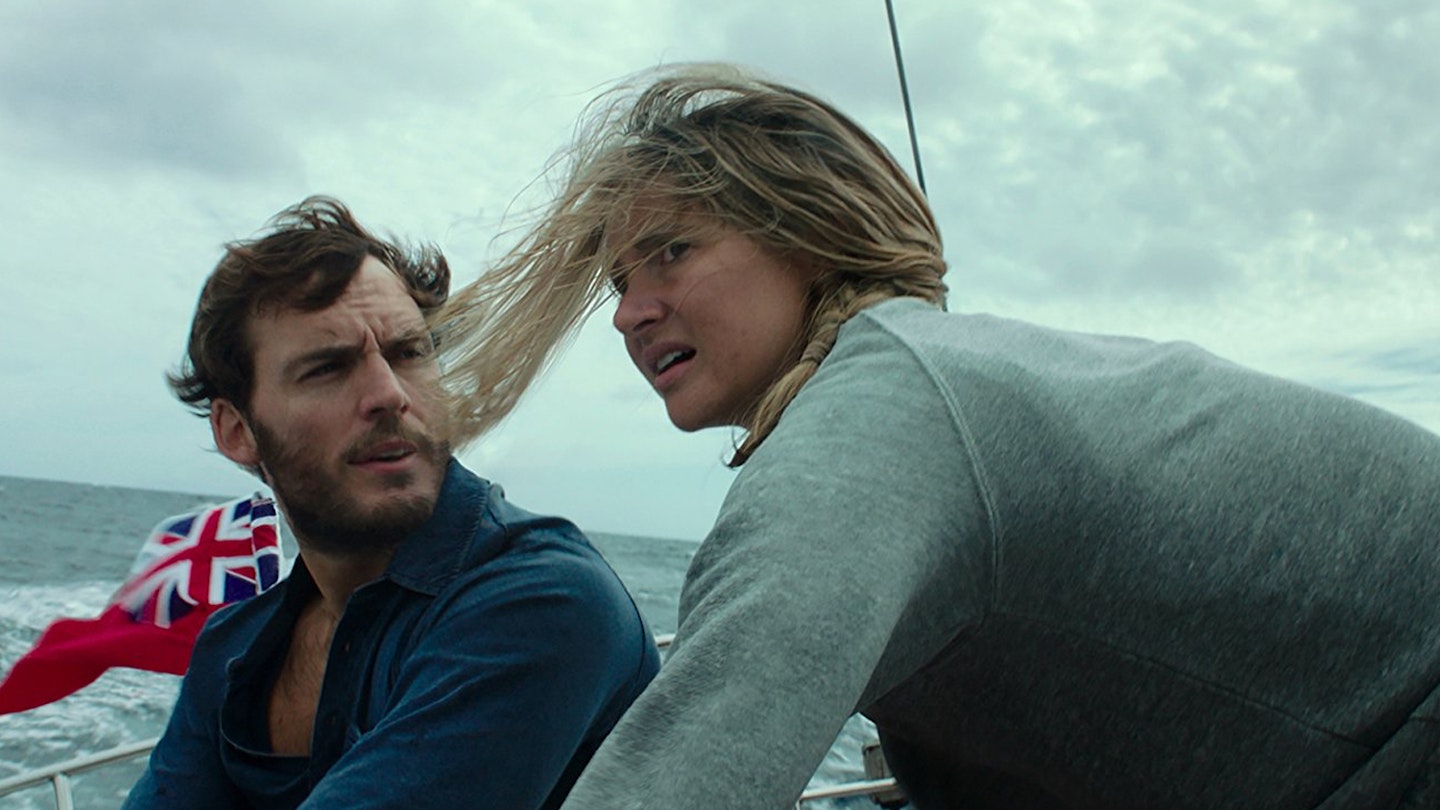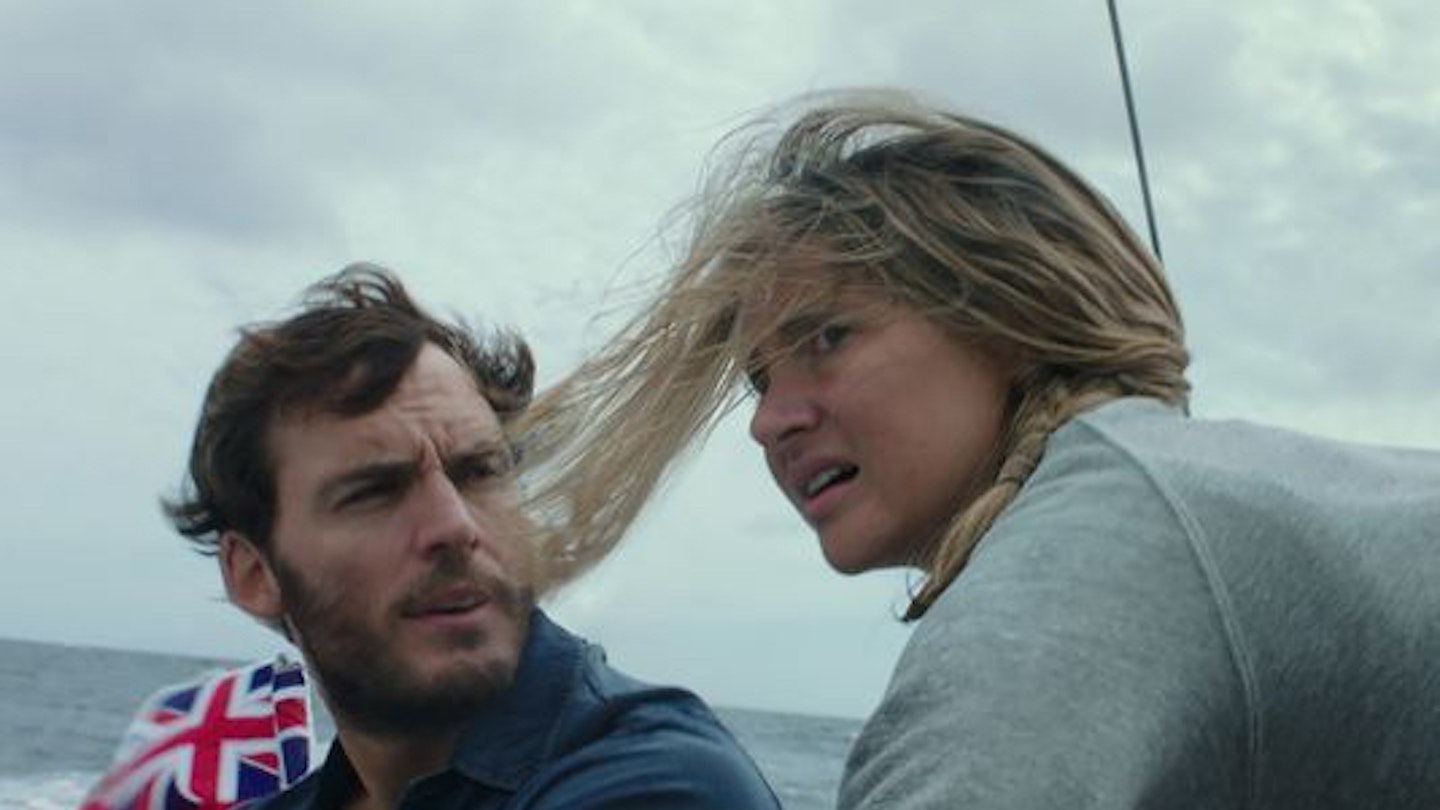While it rarely comes up in lists of cinema’s greatest villains, the ocean as an antagonist is something Hollywood keeps coming back to. And not even because of the things in it (the sharks, the barracuda, the sharktopuses). Bigger than a kaiju, more emotionless than a Terminator, it can’t be bargained with, it can’t be reasoned with and, when you scan the horizon and there’s no land in sight, it can seem as though it absolutely does not stop, ever. In recent years Robert Redford has believed All Is Lost, Ang Lee has told the Life Of Pi and Colin Firth has found himself at The Mercy of the vast ocean. And now it’s the turn of Shailene Woodley and Sam Claflin.

Based on the true story of Tami Oldham (Woodley) and Richard Sharp (Claflin) who, in 1983, were caught in Hurricane Raymond while sailing from Tahiti to San Diego, it opens with Tami waking, post-storm, in the yacht’s partially flooded cabin. Escaping to the deck she discovers she’s all alone, the boat is wrecked and she is… adrift.
From then, any good news is balanced by the bad. Good: she discovers Richard alive, clinging onto their upturned lifeboat. Bad: his leg and ribs are badly broken. And more bad: they’re far off course, nowhere close to the shipping lanes or flightpaths, and in a severely damaged yacht.
The script fails to truly engage you in Tami and Richard’s burgeoning relationship.
In a smart structural move, the film switches between two timelines — the couple’s courtship leading up to the storm, and their increasingly desperate-looking attempt to reach land. These moments of romance and laughter as they meet and fall in love alleviating the bleakness of their eventual situation, and allowing the shifts forward in time (sometimes more than a week at a time) to be less jarring. It also allows us to build to two big moments — the storm, and their ultimate fate.
The problem comes from a script that fails to truly engage you in their burgeoning relationship and so, in turn, lessens the impact of their later struggles. Claflin is as charming as ever, but is done no favours, saddled with lines such as, “Is that how you’d describe a painting by Monet? Red?... No, that sunset’s not red. That sunset’s beet-dyed pomegranate.” Perhaps that’s what passed for flirting in the early-’80s round-the-world yachting community, but here it makes you wonder what Tami is doing with him.
Woodley is far better served because she’s actually given something to do. She turns in an impressively physical performance as Tami attempts to get the yacht back in some semblance of working order, while facing the brunt of what the weather and ocean throws at them.
Of course, with cinema returning to the sea so often, we’ve seen most of these trials before: things need mending, fish need catching, further storms need surviving. There’s the odd surprise, but nothing that can satisfactorily rescue it. The damage has been done.








